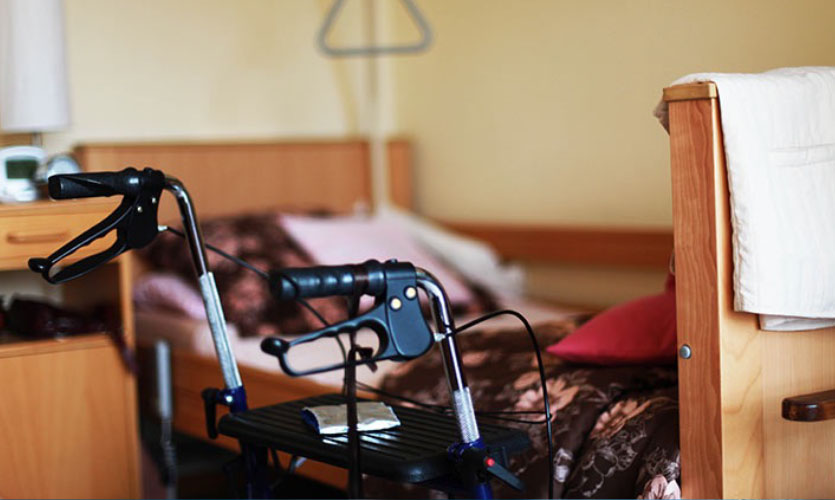
A vast majority of hospice services are provided in the home. In fact, according to a recent report published by The National Hospice and Palliative Care Organization (NHPCO), over one-third of hospice services are provided in private residences. Given the number of patients receiving hospice services in their homes, the obvious question arises: how do I prepare a home for hospice?
How to Prepare a Home for Hospice
When preparing a home for hospice, it is vital to consult with the hospice care provider and the patient’s care team to create a to-do list to get the home ready. At this time, the hospice provider and members of the care team will likely ask for an overview of the household environment so as to understand what is needed to most effectively provide care to the patient. Preparing a home for hospice falls into two broad categories: caregiver preparation and patient comfort.
Caregiver Preparation
Despite the fact that hospice services are being provided in the home, it is important to consider whether the home environment will be conducive for caregivers to assist a patient. While it is not expected to make a home into a hospital room; it should be set up in a way that it is easy for caregivers to do their work while also being a safe environment for the patient to use as well. Here are some things to consider when preparing a home for hospice.
Make The Home Accessible to Both Patient and Caregiver
Think of a hospice patient’s home as both a workspace and a place for comfort. Accordingly, just as is the case in a hospital or long-term care facility, living areas will need to be safe and accessible for both the patient and the caregiver. A home should have ample space to move and for the patient to walk around the house safely. Walkways should be free of hazards and, if needed, have grab bars and other mobility assistance devices to prevent falls. Special consideration should be given to the bathroom, which can be a hazard, particularly if a patient has difficulty moving unassisted and performing activities of daily living (ADLs). In addition, make sure medical equipment that may be needed is in an easy-to-access area for the caregiver.
Find a Suitable Place For a Bed
For patients who will spend a majority of their time in bed, it is important to find an accessible and comfortable area for the bed to be placed. If a patient is having difficulty getting in and out of a regular bed, a hospital bed can provide a safer and easier way for a patient to receive care. It can also make assisting with dressing and making up the bed a lot easier.
A hospital bed is roughly the size of a twin bed, with a moveable foot and headboard that can be elevated and lowered. The bed is normally wheeled and contains convertible bed rails for patient safety. When considering where to place a hospital bed, it is important to consider the activity that will be occurring around the bed, ease of access to the bed, and any medical equipment that may need to be near the bed.
Patient Comfort
The guiding principle that underlies hospice care rests in providing patients with comfort during a terminal illness. The home environment should be set up so that the patient’s surroundings are as comfortable as possible. In many ways, this is a balancing act in which the need for caregivers to provide a safe and workable environment is balanced against the need for a soothing and comfortable environment.
Lighting, Sound, and Temperature
A normal house is often a hub of activity. This type of activity may be comforting to some and provide a sense of normalcy. However, others may find it makes them feel anxious or in the way. Therefore, it is important to pay attention to what the patient prefers and what will make them most comfortable. One consideration that often arises, particularly for patients who spend extended periods of time in bed, involves making sure windows have adequate shade or covering. Since a bedridden patient will remain in one area for long periods during the day, it is important to make sure sunlight and other artificial light from outside can be blocked if needed so as to avoid excessive exposure to the sun or restlessness at night.
A healthy person is likely tolerant of some amount of temperature variation in the home. However, individuals who have been taking medications may be sensitive to fluctuations in temperature. Symptoms of the terminal illness may also cause sensitivity to hot or cold. It is important to make sure the patient has access to a fan or heat in the event that normal room temperature does not feel comfortable.
Comfort Items
While having the right equipment and supplies is essential for providing care, there are other items you may want to provide to bring comfort to the patient. Whether it is a favorite chair, a warm blanket, photos of loved ones, or the “go-to” snack foods. Having access to these items can go a long way in helping a patient remain as comfortable as possible during their final days.
Traditions Health is Ready to Support You
Facing a terminal disease is frightening, but patients and families do not have to face it alone. The hospice mission emphasizes the holistic care that patients and their loved ones need to navigate this difficult time. If you would like more information about our hospice care services, click the Request Care button below and complete the form. A Traditions Health representative will be in touch.
